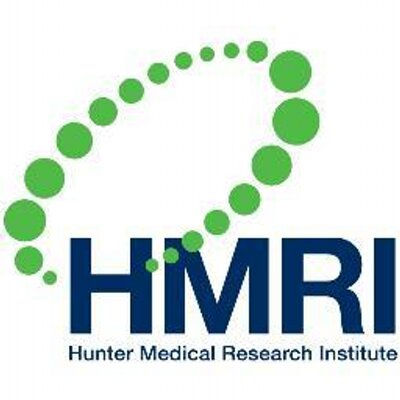预约演示
更新于:2025-05-07
NIF
更新于:2025-05-07
基本信息
别名 60B8AG、CAGB、calgranulin B + [20] |
简介 S100A9 is a calcium- and zinc-binding protein which plays a prominent role in the regulation of inflammatory processes and immune response (PubMed:12626582, PubMed:15331440, PubMed:16258195, PubMed:19122197, PubMed:20103766, PubMed:21325622, PubMed:8423249). It can induce neutrophil chemotaxis, adhesion, can increase the bactericidal activity of neutrophils by promoting phagocytosis via activation of SYK, PI3K/AKT, and ERK1/2 and can induce degranulation of neutrophils by a MAPK-dependent mechanism (PubMed:12626582, PubMed:15331440, PubMed:20103766). Predominantly found as calprotectin (S100A8/A9) which has a wide plethora of intra- and extracellular functions (PubMed:16258195, PubMed:19122197, PubMed:8423249). The intracellular functions include: facilitating leukocyte arachidonic acid trafficking and metabolism, modulation of the tubulin-dependent cytoskeleton during migration of phagocytes and activation of the neutrophilic NADPH-oxidase (PubMed:15331440, PubMed:21325622). Participates also in regulatory T-cell differentiation together with CD69 (PubMed:26296369). Activates NADPH-oxidase by facilitating the enzyme complex assembly at the cell membrane, transferring arachidonic acid, an essential cofactor, to the enzyme complex and S100A8 contributes to the enzyme assembly by directly binding to NCF2/P67PHOX (PubMed:15642721, PubMed:22808130). The extracellular functions involve pro-inflammatory, antimicrobial, oxidant-scavenging and apoptosis-inducing activities (PubMed:19534726, PubMed:8423249). Its pro-inflammatory activity includes recruitment of leukocytes, promotion of cytokine and chemokine production, and regulation of leukocyte adhesion and migration (PubMed:15598812, PubMed:21487906). Acts as an alarmin or a danger associated molecular pattern (DAMP) molecule and stimulates innate immune cells via binding to pattern recognition receptors such as Toll-like receptor 4 (TLR4) and receptor for advanced glycation endproducts (AGER) (PubMed:19402754). Binding to TLR4 and AGER activates the MAP-kinase and NF-kappa-B signaling pathways resulting in the amplification of the pro-inflammatory cascade (PubMed:19402754, PubMed:22804476). Has antimicrobial activity towards bacteria and fungi and exerts its antimicrobial activity probably via chelation of Zn(2+) which is essential for microbial growth (PubMed:19087201). Can induce cell death via autophagy and apoptosis and this occurs through the cross-talk of mitochondria and lysosomes via reactive oxygen species (ROS) and the process involves BNIP3 (PubMed:19935772). Can regulate neutrophil number and apoptosis by an anti-apoptotic effect; regulates cell survival via ITGAM/ITGB and TLR4 and a signaling mechanism involving MEK-ERK (PubMed:22363402). Its role as an oxidant scavenger has a protective role in preventing exaggerated tissue damage by scavenging oxidants (PubMed:21912088, PubMed:22489132). Can act as a potent amplifier of inflammation in autoimmunity as well as in cancer development and tumor spread (PubMed:16258195). Has transnitrosylase activity; in oxidatively-modified low-densitity lipoprotein (LDL(ox))-induced S-nitrosylation of GAPDH on 'Cys-247' proposed to transfer the NO moiety from NOS2/iNOS to GAPDH via its own S-nitrosylated Cys-3 (PubMed:25417112). The iNOS-S100A8/A9 transnitrosylase complex is proposed to also direct selective inflammatory stimulus-dependent S-nitrosylation of multiple targets such as ANXA5, EZR, MSN and VIM by recognizing a [IL]-x-C-x-x-[DE] motif (PubMed:25417112). |
关联
10
项与 NIF 相关的药物作用机制 HDAC4抑制剂 [+1] |
在研适应症 |
最高研发阶段临床2期 |
首次获批国家/地区- |
首次获批日期1800-01-20 |
靶点 |
作用机制 NIF抑制剂 |
在研适应症 |
非在研适应症- |
最高研发阶段临床前 |
首次获批国家/地区- |
首次获批日期1800-01-20 |
作用机制 CagA抑制剂 [+1] |
在研适应症 |
非在研适应症- |
最高研发阶段临床前 |
首次获批国家/地区- |
首次获批日期1800-01-20 |
18
项与 NIF 相关的临床试验NCT06605586
A Phase 1b/2 Trial with Tasquinimod in Patients with Myelofibrosis (primary, Post-PV or PostET) Refractory to or Intolerant for JAK2 Inhibition: the TasqForce Trial
The goal of this clinical trial is to learn if therapy can be improved in patients with myelofibrosis (MF) who have primary resistance or who have progressed after treatment with a Janus kinase (JAK) inhibitor or are intolerant for this category of drugs.
The main questions it aims to answer are:
* To evaluate the feasibility and safety of once daily dose of tasquinimod for 24 weeks (6 cycles)
* To determine the optimal dose
Patients will be treated once daily with tasquinimod for a maximum period of 24 weeks (6 cycles).
During the study most (diagnostic) procedures are part of the standard of care. Different from standard of care:
* Participation may lead to extra visits to the outpatient clinic
* Additional blood will be drawn when blood is already taken per standard of care
* Bone marrow sampling at entry and at the end of the trial
* MRI scans (or CT-scans) have to be performed
* Quality-of-life questionnaires have to be filled out
The main questions it aims to answer are:
* To evaluate the feasibility and safety of once daily dose of tasquinimod for 24 weeks (6 cycles)
* To determine the optimal dose
Patients will be treated once daily with tasquinimod for a maximum period of 24 weeks (6 cycles).
During the study most (diagnostic) procedures are part of the standard of care. Different from standard of care:
* Participation may lead to extra visits to the outpatient clinic
* Additional blood will be drawn when blood is already taken per standard of care
* Bone marrow sampling at entry and at the end of the trial
* MRI scans (or CT-scans) have to be performed
* Quality-of-life questionnaires have to be filled out
开始日期2025-02-20 |
NCT06327100
Open Label Phase 2 Study of Tasquinimod in Patients With Primary Myelofibrosis (PMF), Post-Polycythemia Vera Myelofibrosis (Post-PV MF), or Post-Essential Thrombocytosis Myelofibrosis (Post-ET MF)
To learn if tasquinimod either alone or in combination with ruxolitinib can help to control PMF, post-PV MF, or post-ET MF.
开始日期2024-08-01 |
ACTRN12621000016831
A randomized, double-blind, placebo-controlled phase II trial to evaluate the efficacy of tasquinimod in reducing the time taken for a 2-point decrease in admission status.in adults with COVID-19
开始日期2022-12-15 |
100 项与 NIF 相关的临床结果
登录后查看更多信息
100 项与 NIF 相关的转化医学
登录后查看更多信息
0 项与 NIF 相关的专利(医药)
登录后查看更多信息
4,414
项与 NIF 相关的文献(医药)2025-08-01·Brain, Behavior, and Immunity
Lack of relationships between ketamine treatment and peripheral neurotrophic and inflammatory factors in a randomized controlled ketamine trial of major depressive disorder
Article
作者: Hossein, Shabnam ; Mathew, Sanjay J ; Spotts, Crystal ; Price, Rebecca B ; Wallace, Meredith L ; Howland, Robert H ; Kovats, Tessa ; Panny, Benjamin ; Marsland, Anna ; Hutchinson, Zakary ; Griffo, Angela ; Rengasamy, Manivel
2025-06-01·Journal of Affective Disorders
Inflammation molecular network alterations in a depressive-like primate model
Article
作者: Wang, Qingyun ; Zhang, Zhiting ; Dai, Ji ; Zhang, Zhijun ; Bu, Siyuan ; Zhang, Gaojia
2025-06-01·Biomaterials
Biomimetic nanostructural materials based on placental amniotic membrane-derived nanofibers for self-healing and anti-adhesion during cesarean section
Article
作者: Li, Huayan ; Jiang, Haoyuan ; Gao, Kunjie ; Wu, Jianwei ; Liu, Fenghua ; Wang, Qian ; Chen, Feng ; Zhu, Honglei ; Wang, Yifeng ; Shuai, Xintao ; Yi, Xiao ; Liang, Xiaomei ; Liao, Yuru
29
项与 NIF 相关的新闻(医药)2024-12-09
编者按
第66届美国血液学会(American Society of Hematology,ASH)年会于2024年12月7日至10日在美国圣迭戈盛大召开。作为全球血液学领域规模最大的国际学术盛会之一,汇集了最前沿的研究进展及最新的药物研发数据,展示全球血液学领域的最高学术水平。在本届大会上,浙江大学医学院附属第一医院王华锋教授团队有4项研究入选ASH年会展示及报告,涵盖骨髓增生异常综合征(MDS)的新治疗和急性髓系白血病(AML)的机制探索、潜在治疗方向及预后影响。为让大家更好了解这些研究成果,《肿瘤瞭望-血液时讯》特邀王华锋教授详细介绍研究内容并进行精彩点评。
研究1
新型BCL-2抑制剂Lisaftoclax(APG-2575)联合阿扎胞苷治疗骨髓增生异常综合征(MDS)
Lisaftoclax (APG-2575), a Novel BCL-2 Inhibitor, in Combination with Azacitidine in Treatment of Patients with Myelodysplastic Syndrome (MDS)(摘要号:3202)
报告时间:
2024年12月8日,星期日,下午18:00-20:00(美国西部时间)
2024年12月9日,星期一,上午10:00-12:00(北京时间)
第一作者:王华锋
通讯作者:金洁
研究背景及目的
MDS是起源于造血干细胞的一组异质性髓系克隆性疾病,特点是髓系细胞分化及发育异常,表现为无效造血、难治性血细胞减少、造血功能衰竭,高风险向急性髓系白血病转化。去甲基化药物(HMA,如阿扎胞苷、地西他滨)仍然是高危MDS的标准治疗,但临床疗效欠佳。而HMA治疗失败/耐药的MDS患者,预后很差,这些高危MDS患者亟需新的治疗方案。
临床前数据显示,新型BCL-2抑制剂APG-2575(Lisaftoclax)与阿扎胞苷联合可协同诱导急性髓系白血病(AML)和MDS肿瘤细胞的凋亡。此次会议报告的是一项Ib/II期临床试验的安全性和有效性随访数据,重点评估APG-2575(Lisaftoclax)联合阿扎胞苷治疗成人MDS患者的疗效。
研究方法
研究纳入高危MDS患者(IPSS-R评分> 3.5;骨髓原始细胞>5%),包括初治(TN)和复发/难治性(R/R)MDS患者。APG-2575(Lisaftoclax)使用指定剂量(400 mg, 600 mg或800 mg),每天一次,第1天至第14天使用;在第1天至第7天联合使用阿扎胞苷(75 mg/m2/天),每28天为一个治疗周期。在第一个治疗周期中,APG-2575(Lisaftoclax)采用每日剂量递增方案以预防肿瘤溶解综合征(TLS)。该研究的主要目的是评估此联合疗法治疗MDS患者的有效性和安全性,并确定APG-2575(Lisaftoclax)的推荐III期剂量。根据2006年国际工作组(IWG)标准评估完全缓解(CR)和骨髓完全缓解率(mCR)。
研究结果
截至2024年7月1日,共有49例患者入组:8例为R/R MDS(APG-2575[Lisaftoclax] 600 mg [n=5]和800 mg [n=3]),41例为TN MDS(APG-2575 [Lisaftoclax] 400 mg [n=16]、600 mg [n=23]和800 mg [n=2])。中位(范围)年龄为66(22~83)岁,55.1%的患者为男性。IPSS-R风险分级为中危(12/49[24.5%])、高危(24/49[49.0%])和极高危(13/49[26.5%])。39例有基因突变谱数据的患者中,9例(23.1%)有TP53突变;11例(28.2%)有TET2突变;10例(25.6%)有ASXL1突变;10例(25.6%)有RUNX1突变。基线时,70.8%的患者报告了≥3级贫血;54.2%报告了≥3级中性粒细胞减少;45.8%报告了≥3级血小板减少症。
4例(8.2%)患者曾因不良事件引起APG-2575(Lisaftoclax)减量。60天死亡率和TLS发生率均为0。在8例R/R MDS患者中,中位治疗时间(DOT)为3.2(1.2~9.4)个月。总反应率(ORR = CR[12.5%] +mCR[62.5%])为75.0%(95%CI:34.9~96.8)。在40例可评估疗效的TN MDS患者中,中位DOT为4.5(0.5~12.1)个月;根据IWG 2006标准,ORR为77.5%(95%CI:61.5~89.2),CR率为25.0%。此外,23例接受APG-2575(Lisaftoclax)600 mg联合阿扎胞苷治疗的TN MDS患者中,ORR和CR率分别为73.9%和30.4%;由于这些患者的中位治疗时间相对较长(6.01个月),我们根据IWG 2023标准进行了进一步分析,复合CR率(CR2023 = CR [52.2%] + CRL[17.4%])为69.6%,中位达到CR时间(范围)为2.84(1.1~8.7)个月。中位无进展生存期和中位总生存期均未达到。
所有接受APG-2575(Lisaftoclax)联合阿扎胞苷治疗的患者均报告了治疗中出现的不良事件(TEAEs),其中93.8%为≥3级不良事件,35.4%为严重不良事件。常见的≥3级非血液学TEAEs(发生率≥10%)包括肺炎(24.4%)和低钾血症(10.2%)。常见的≥3级血液学TEAEs包括白细胞计数减少(75.5%)、中性粒细胞减少(69.4%)、血小板减少(65.3%)、贫血(24.5%)和发热性中性粒细胞减少(18.4%)。46.9%的患者报告≥3级感染,其中26.5%与治疗相关。11例(22.4%)患者发生了因不良事件导致的周期间治疗延迟,中位延迟时间(范围)为12(1~63)天。
共有95.9%的患者报告了与治疗相关的不良事件(TRAEs),其中87.8%为≥3级不良事件,28.6%为严重不良事件。常见的≥3级血液学TRAEs包括白细胞计数减少(71.4%)、中性粒细胞减少(65.3%)、血小板减少(65.3%)、贫血(20.4%)和发热性中性粒细胞减少(12.2%)。
研究结论
以上临床数据表明,APG-2575(Lisaftoclax)联合阿扎胞苷在高危TN或R/R MDS患者治疗中具有重要作用。该联合治疗呈现良好的有效性和耐受性,60天死亡率为0,需要APG-2575(Lisaftoclax)减量的患者少,感染率低,支持该联合治疗在高风险MDS患者中的进一步临床开发。
王华锋教授点评
多年来,在高危MDS的治疗领域一直缺乏重大进展,HMA作为当前的标准治疗,其疗效仍不够令人满意。尽管尝试了多种治疗方法,但因MDS患者年龄偏大、骨髓功能差、合并症多,治疗过程中的安全性问题已成为最为棘手的挑战。为此,本研究探讨了新型BCL-2抑制剂Lisaftoclax联合阿扎胞苷治疗MDS,结果显示该联合疗法不仅有效性高,而且安全性好、骨髓抑制轻,尤其是治疗相关感染发生率低、程度较轻,早期死亡率为0,为这类难治患者的治疗提供了有效解决方案。我认为这种联合疗法有望改变MDS的标准治疗,使更多MDS患者受益,延长生存期。
研究2
整合空间转录组、单细胞测序以及组织病理学揭示AML患者骨髓异质性
Integrating Spatial Transcriptome, Single-Cell Sequencing and Histopathology Reveals Bone Marrow Spatial Heterogenous in AML patients(摘要号:2215)
报告时间:
2024年12月7日,星期六,下午5:30至7:30(美国西部时间)
2024年12月8日,星期日,上午9:30至11:30(北京时间)
第一作者:林祥杰
通讯作者:金洁、王华锋、裴唯珂
急性髓系白血病(AML)是一种高度异质性的血液恶性肿瘤,预后较差,主要原因在于患者对一线化疗产生耐药性以及缓解期患者复发率较高。这凸显了传统化疗在治愈大多数AML患者方面的局限性。空间转录组(ST)技术已成为研究空间基因表达和细胞间相互作用模式的有力工具,然而,将其应用于富含钙的组织(如骨髓)一直存在挑战。在本研究中,我们首次引入了一种新颖的骨髓组织石蜡包埋和脱钙方法,该方法与Visium载玻片完全兼容。
为了验证该方法,我们收集了AML患者的骨髓组织,并进行了空间转录组测序和单细胞RNA测序。我们在AML-b8和AML-b9位点分别获得了5364±2049和4892±2096个唯一分子标识符(UMI),显著高于已发表的骨髓研究数据,与软组织研究的数据相当。这表明我们的方法克服了从富含钙的组织中收集空间转录组数据的局限性。利用标记基因,我们准确绘制了骨髓中巨核细胞(MKs)和骨小梁的空间分布,并通过苏木精-伊红(HE)染色进行了验证。我们首次整合了空间转录组数据、单细胞测序和组织学分析,为AML患者的骨髓提供了全面的表征。在确认每个位点的细胞类型后,我们展示了AML患者骨髓组织的图谱,这些图谱既可以提供空间信息,也可以显示基因表达水平。
此外,由于保留了组织结构,我们发现与骨髓涂片和流式细胞术相比,空间转录组结果中的原始细胞比例更准确地反映了AML患者的肿瘤负荷。我们的分析区分了骨髓肿瘤细胞内的七个亚群,包括白血病干细胞(LSCs),这凸显了我们的方法在阐明AML患者LSCs分布和转录组特征方面的潜力。在空间转录组模型中,我们观察到基因表达水平与其到骨内膜生态位的距离之间存在显著相关性,如S100A8、S100A9、CYBB、CHMP3、PACS2、UNC93B1、CMKLR1和TFRC等基因。对肿瘤内枢纽的功能分析揭示了包括Toll样受体级联反应、凋亡过程等在内的关键通路,这些通路在骨髓样本中至关重要。总之,我们提出了一种开创性的骨髓空间转录组分析方法,为AML患者的骨髓特征提供了完整而详细的描述。这项工作为更深入地了解AML的病理生理机制铺平了道路,并可能为开发更有效的治疗策略提供指导。
王华锋教授点评
尽管单细胞测序(scRNA-seq)和免疫荧光技术已经明确了AML的骨髓微环境异质性,并提出了LSCs的关键作用,但在血液疾病中,骨髓的空间转录组分析仍然是一个巨大的挑战。我们提出了一种基于脱钙的骨髓空转新方法——SPOT-seq,可以在保证mRNA完整性的前提下提供AML患者骨髓的空间转录组图谱。SPOT-seq方法整合了空间转录组学、单细胞测序和组织病理学,同时观察到,更高比例的干细胞样肿瘤细胞亚群位于骨内膜龛附近,且骨内膜龛的距离与特定基因的表达呈正相关。我们的研究为进一步了解人类骨髓组织空间转录信息提供了一种非常可靠的方法。
研究3
早期T细胞前体急性淋巴细胞白血病中的线粒体缺陷代谢特征
Metabolic Signature of Oxidative Phosphorylation Deficiency with Activated Nucleotide Biosynthesis in Early T-Cell Precursor Acute Lymphoblastic Leukemia(摘要号:2748)
报告时间:
2024年12月8日,星期日,下午6:00至8:00(美国西部时间)
2024年12月9日,星期日,上午10:00至12:00(北京时间)
第一作者:祝颖慧
通讯作者:王华锋
早期T细胞前体急性淋巴母细胞白血病(ETP-ALL)是一种具有干细胞特性的高度侵袭性T细胞急性淋巴细胞白血病(T-ALL)亚型。尽管其临床意义重大,但关于该亚型蛋白背景的全面研究仍然有限。在本研究中,我们对8例初诊为ETP-ALL的患者的骨髓样本进行了深入的4D蛋白组定量分析。为了进行比较,我们还纳入了年龄和性别匹配的T-ALL患者、AML患者和健康供体(HD)的样本(每组n=8),以描绘ETP-ALL独特的蛋白组学特征。
总共鉴定出8119个不同的蛋白质组,其中T-ALL与AML之间有1063种差异表达蛋白,而ETP-ALL与AML之间差异表达的蛋白数量较少(n=686),这反映了ETP-ALL的白血病细胞不成熟状态,类似于髓系祖细胞。值得注意的是,与AML和T-ALL相比,ETP-ALL在ATP合成与电子传递及氧化磷酸化(OxPhos)方面的调控具有独特性。通过k-means聚类分析,我们确定了六个表达簇,其中第4簇最为富集,特别与OxPhos相关。
我们的分析确定了24种特征性的OxPhos蛋白,这些蛋白能够在多个数据集中将ETP-ALL与非ETP-ALL区分开来(TARGET; Zhang et al., Nature, 2012; Dai et al., PNAS, 2012)。我们进一步验证了三种代表性ETC复合体蛋白NDUFB6、NDUFS5和COX7C的表达情况,这些蛋白在ETP-ALL中的表达水平相较于T-ALL和AML显著降低。此外,ETP-ALL还表现出细胞色素C氧化酶活性减弱和细胞总NAD(H)含量下降。更重要的是,原发性ETP-ALL细胞的耗氧率和线粒体ATP(mitoATP)产量均有所降低。综上所述,ETP-ALL细胞的代谢途径类似于不成熟的前体细胞或干细胞,其特征是OxPhos活性低且处于静止状态。我们发现ETP-ALL在ETC介导的OxPhos中表现出独特的缺陷,这表明其可作为免疫表型标准之外的潜在诊断标志物。这一发现还提示了一种有前景的治疗策略,即通过增加OxPhos活性来改变细胞代谢,同时诱导细胞分化,从而提高细胞对化疗的敏感性。
此外,我们确定了CD109作为一种新型免疫表型标志物,能够区分ETP-ALL与其他T-ALL亚型和AML。在一组原始样本的验证中显示,CD109在ETP-ALL患者中的阳性率约为15%~20%,而在T-ALL或AML中表达较弱(阳性率<5%),这表明CD109具有潜在的诊断价值。CD109被认为是干细胞标志物之一,这也可能与ETP-ALL的OxPhos活性和静止状态特征相关。
为了进一步阐明ETP-ALL中独特的代谢途径,我们确定了在ETP-ALL、T-ALL、AML和健康单核细胞(MNCs)代谢途径中显著差异表达的蛋白质。每组均展现出不同的代谢特征,这些特征由123种特征性蛋白突出显示。我们使用UMAP将32个样本的这些特征投射到二维景观中,并观察到这些代谢特征足以根据亚型将患者和健康供体聚类。值得注意的是,ETP-ALL位于AML和T-ALL之间,这与之前的报道一致。有趣的是,所有参与核苷酸生物合成,特别是从头合成途径(De Novo Purine Biosynthesis,DNPB)的关键酶,在ETP-ALL病例中均表现出表达上调。我们的发现不仅揭示了ETP-ALL的代谢特征,还强调了靶向嘌呤代谢作为ETP-ALL新型治疗途径的潜力。ETP-ALL中核苷酸生物合成过程的特异性激活,揭示了一个有前景的治疗靶点。
目前,ETP-ALL的识别完全依赖于免疫表型标准,这可能会因遗传异质性而遗漏部分病例。我们的研究揭示了一个独特的全局蛋白质特征谱、代谢特征和一种针对ETP-ALL的新型标志物,为诊断标准提供了新的见解,并为临床管理和治疗干预提供了潜在途径。
王华锋教授点评
本研究通过对ETP-ALL、T-ALL、AML患者及健康供体样本进行深入的蛋白质组学分析,揭示了ETP-ALL的独特特征,并为未来的诊断和治疗策略提供依据。研究发现,ETP-ALL中的OxPhos显著降低,主要与细胞色素C氧化酶和泛醌氧化还原酶的下调有关,综合转录、翻译、酶活性和通路通量分析均支持这一结果。功能性实验显示,与AML和T-ALL相比,ETP-ALL的线粒体呼吸受损,且线粒体膜电位丧失。通过恢复OxPhos可诱导ETP-ALL细胞凋亡和分化,并在独立患者队列中得到验证。本研究全面揭示了ETP-ALL独特的蛋白质和代谢特征,为诊断标准提供新见解,并为临床管理和治疗干预提供潜在方向。
研究4
治疗方案对CEBPAbZIP-inf突变急性髓系白血病预后的影响
Impact of different therapeutic regimen on prognosis in CEBPAbZIP-inf acute myeloid leukemia(摘要号:4274)
报告时间:
2024年12月9日,星期一,下午6:00至8:00(美国西部时间)
2024年12月10日,星期二,上午10:00至12:00(北京时间)
第一作者:潘佳佳
通讯作者:王华锋、金洁
研究背景
CEBPA突变是急性髓系白血病(AML)中一种常见的分子异常。最近的研究报道,CEBPA bZIP结构域的框内突变是AML预后良好的标志。有文献报道,CEBPA突变与NF-κB p50的相互作用,从而激活BCL2 P2启动子,从而增强BCL2的表达。然而,BCL2抑制剂venetoclax对CEBPAbZIP-inf AML患者的具体影响仍未得到充分研究。因此,本研究回顾性分析了携带CEBPAbZIP-inf的AML患者的临床特征、共突变谱以及诱导治疗方案对其预后的影响。
研究方法
本研究共纳入103例具有生物学数据的初诊CEBPAbZIP-inf AML患者,其中44例患者接受传统“7+3”强化化疗(IC),20例患者接受venetoclax联合去甲基化药物方案(VEN+HMA),27例患者接受venetoclax联合强化化疗(VEN+IC)。本研究分析了患者的临床特征、共突变谱、总缓解率、复合完全缓解(CRc)率、总生存期(OS)和无事件生存期(EFS)。
研究结果
VEN+HMA组患者的年龄大于IC组和VEN+IC组。诊断时的中位年龄分别为47.0岁(IC组)、69.0岁(VEN+HMA组)和42.0岁(VEN+IC组)。在VEN+HMA组中,ASXL1/2(20%)、TET2(40%)和NPM1(20%)的共突变相对更为常见(P值分别为0.0051、0.02、0.0051)。
经过一个周期的诱导治疗后,35例(79.55%)患者达到了完全缓解(CR)/完全缓解伴血细胞不完全恢复(CRi),在IC组中,11例(31.4%)患者复发;在VEN+HMA组中,16例(80%)患者达到CR/CRi,其中8例(50%)复发;在VEN+IC组中,26例(96.3%)患者达到CR/CRi,9例(34.6%)复发。IC组、VEN+HMA组和VEN+IC组患者的中位随访时间分别为815.0天、599.0天和673.0天。三组OS分别为未达到、652.0天和未达到。与VEN+HMA组相比,接受IC和VEN+IC治疗的患者中位OS显著更长(IC vs. VEN+HMA,P=0.0025;VEN+IC vs. VEN+HMA,P=0.0183),但IC组和VEN+IC组之间无显著差异(IC vs. VEN+IC,P=0.928)。三组中位无事件生存期(EFS)分别为未达到、439.0天和未达到(IC vs. VEN+HMA,P=0.168;VEN+IC vs. VEN+HMA,P=0.227;IC vs. VEN+IC,P=0.915)。按年龄分层分析患者时,无论患者年龄为60岁及以下还是60岁以上,三个队列之间的OS和EFS均无显著差异。在60岁及以下的患者中,IC组、VEN+HMA组和VEN+IC组的中位OS均未达到(IC vs. VEN+HMA,P=0.746;VEN+IC vs. VEN+HMA,P=0.657;IC vs. VEN+IC,P=0.704),EFS分别为未达到、222.0天和未达到(IC vs. VEN+HMA,P=0.0904;VEN+IC vs. VEN+HMA,P=0.204;IC vs. VEN+IC,P=0.713)。在60岁以上的患者中,IC组、VEN+HMA组和VEN+IC组的中位OS分别为未达到、652天和未达到(IC vs. VEN+HMA,P=0.522;VEN+IC vs. VEN+HMA,P=0.497;IC vs. VEN+IC,P=0.617),EFS分别为294.0天、790.0天和未达到(IC vs. VEN+HMA,P=0.267;VEN+IC vs. VEN+HMA,P=0.431;IC vs. VEN+IC,P=0.299)。
研究结论
综上所述,IC、VEN+HMA和VEN+IC方案在经过一个周期的诱导治疗后,均显示出相似的CRc率,且对CEBPAbZIP-inf患者的预后没有显著影响。
王华锋教授点评
本研究回顾性地分析了103例携带CEBPAbZIP-inf的AML患者的临床特征、共突变谱以及诱导方案对患者预后的影响。其中,44例接受常规“7+3”强化化疗(IC)诱导,20例接受venetoclax加去甲基化药物方案(VEN+HMA)诱导,27例接受venetoclax加强化化疗(VEN+IC)诱导。IC组、VEN+HMA组、VEN+IC组的一疗程CRc率分别为79.55%,80%和96.3%,复发率为31.4%, 50%和34.6%;生存分析显示,按年龄分层分析患者时,无论患者年龄是60岁或以下,还是60岁以上,三个队列的OS和EFS没有显著差异。因此,对CEBPAbZIP-inf患者,不同诱导治疗方案(IC、VEN+HMA或VEN+IC)对一疗程的CRc及预后没有显著影响。
王华锋 教授
浙江大学医学院附属第一医院
浙江大学医学院附属第一医院 血液科 主任助理
副教授/副主任医师/博士生导师/特聘研究员
美国City of Hope国家医学中心博士后
美国布朗大学以及英国Royal Free Hospital访问学者
浙江省551人才计划医坛新秀
中国女医师协会靶向专业委员会委员
中国抗癌协会血液病转化委员会青年委员
浙江省医师协会血液学分会秘书
浙江省领军型创新创业团队成员
主持多项国家自然科学基金、省部级重点课题
以第一作者或通讯作者发表20余篇,分别发表在Lancet Haematol、Adv Sci、Leukemia、Am J Hematol、Blood Cancer J等期刊
国际会议口头报告及摘要报告多次,获得5次美国血液学年会ASH Abstract Achievement Award浙江省卫生科技进步二等奖
(来源:《肿瘤瞭望–血液时讯》编辑部)
声 明
凡署名原创的文章版权属《肿瘤瞭望》所有,欢迎分享、转载。本文仅供医疗卫生专业人士了解最新医药资讯参考使用,不代表本平台观点。该等信息不能以任何方式取代专业的医疗指导,也不应被视为诊疗建议,如果该信息被用于资讯以外的目的,本站及作者不承担相关责任。
临床结果临床1期临床3期临床终止AHA会议
2024-12-09
编者按
2024年12月7日至10日,第66届美国血液学会(ASH)年会在美国圣迭戈隆重召开,全球血液学专家学者齐聚一堂,共同对血液领域最新研究进展进行深入探讨与交流。在本届大会上,聚焦于淋巴瘤CAR-T细胞疗法的三项口头报告(Oral 94、238、367)尤为引人注目,它们分别从提高可及性、优化疗效和耐药机制等不同角度展示了CAR-T疗法的最新进展。《血液时讯》ASH东方谈栏目特邀浙江大学医学院附属第二医院钱文斌教授,对三项研究进行深入点评,为临床实践提供宝贵的指导和启示。
Oral 94
FAST CAR-T疗法成为降低成本与扩大可及性的新希望
制备时间小于1天的CAR-T产品UF-Kure19治疗复发/难治性非霍奇金淋巴瘤患者的I期研究结果
【滑动查看研究内容】
CD19 CAR-T疗法显著改善了非霍奇金淋巴瘤(NHL)患者的预后,但其可及性严重受限。美国约75%~80%的符合条件患者以及全球更多患者未能接受该治疗。主要障碍包括制造工艺复杂、缓慢、成本高且可扩展性差。此外,治疗延误致使众多患者病情进展。高复发率(一年内30%~60%)以及细胞因子释放综合征和神经毒性等副作用亦很常见。
为攻克这些难题,本研究团队研发了超快速CAR-T制造平台UF-CAR,其无需体外CAR-T扩增。该平台能在24小时内直接用外周血单个核细胞(PBMCs)生产出性价比高的CAR-T产品。UF-CAR规避了T细胞分离环节,进而缩减时间、成本与设备需求。此工艺可实现快速、低成本、高可扩展性的CAR-T生产,适用于全球范围。鉴于产品中高比例的初始T细胞和早期记忆T细胞致使肿瘤杀伤动力学减缓,我们预期其安全性更佳。
前期在一项单臂、多中心I期研究(NCT05400109)中评估了第二代4-1BB CAR(UF-Kure19)的安全性与有效性,该研究纳入10例CD19+复发/难治性NHL患者。入组患者中位年龄64.5岁(范围45-83岁),既往接受过中位1.5线治疗(范围1-7线)。淋巴瘤亚型包括套细胞淋巴瘤(n=2)、滤泡淋巴瘤(n=4)、弥漫大B细胞淋巴瘤(DLBCL,n=3)以及浆母细胞淋巴瘤(n=1)。所有患者的UF-Kure19均在一天内制造完成,并符合所有预设放行标准。输注产品的初始T细胞、中央记忆细胞、效应记忆细胞和晚期效应细胞百分比与采血前水平相符,凸显制造工艺的非扩增特性。患者在接受环磷酰胺(500mg/m²)和氟达拉滨(30mg/m²)预处理后,单次输注UF-Kure19(1750万CAR-T细胞)。
截至2024年7月30日,中位随访6个月(范围1.6-14.4个月),缓解率达 80%(8/10例),所有缓解患者均实现完全代谢缓解(CMR)。2例未缓解者起初病情稳定,随后进展。截至截止日期,所有缓解患者的CR状态持续维持。9例患者在治疗后中位6个月(范围1.6-14.4个月)时存活,1例未缓解者因疾病进展死亡。缓解持续时间和无进展生存期的中位数尚未确定,后续将更新患者预后情况。
除1例未缓解者外,其余患者均在输注后2天检测到CAR+T细胞扩增。与标准CAR-T产品相比,CAR+T细胞扩增动力学延迟,UF-Kure19 CAR+T细胞峰值水平7.07%(范围:2.3%~13.2%),峰值时间为21天(范围:6-30天)。仅在实现缓解的患者中观察到增殖(Ki67+)CAR-T细胞高于定量限(中位Ki67+CAR-T细胞峰值:1.5%;范围1.4%~8.8%)。所有患者在+30天出现B细胞发育不全,并在所有检测样本中持续存在(中位持续90天,范围30天至1年)。所有缓解患者体内循环CAR-T细胞(占T细胞的>1%)持续存在,其中1例患者直至输注后12个月仍可检测到。
不良反应包括3例(30%)患者出现细胞因子释放综合征(CRS,1级n=1,2级n=2),中位发生时间为9天(范围7-11天)。1例2级CRS接受托珠单抗治疗,2例2级病例均在1天内降低至1级或缓解。1例患者出现3级免疫效应细胞相关神经毒性综合征(ICANS),1天内缓解。其他3级及以上不良事件包括缺氧(n=1)、中性粒细胞减少(n=8)、白细胞减少(n=6)、淋巴细胞减少(n=4)以及血栓栓塞事件(n=1)。
免疫表型分析显示,首名未缓解者(浆母细胞淋巴瘤)的CD4 T细胞、初始T细胞和早期记忆T细胞水平最低,CCR4、CCR7、CD127和CD28表达降低,但在采血和CAR产品中KLRG1、CD38和CD39水平较高。第二名未缓解者(DLBCL)的T细胞谱与缓解者相似,但输注后未检测到增殖的Ki67+ CAR+T细胞。总体而言,UF-Kure19展现出高效性与耐受性,有望解决当前可及性难题,拓展CAR-T疗法的全球应用范围。
钱文斌教授:我们知道,CD19 CAR-T细胞疗法在大B细胞淋巴瘤领域取得了令人瞩目的显著成果。在我国,已有两款CD19 CAR-T产品获批上市,用于治疗难治性或复发性,且已经历三线或以上治疗的大B细胞淋巴瘤患者。然而,作为一种高度个性化的细胞治疗技术,高昂的成本限制了其在临床上的广泛应用,导致可及性相对不足。
近期,美国血液学会(ASH)年会上公布的Oral 94研究结果——制备时间小于1天的FAST CAR-T疗法UF-Kure19在治疗复发/难治性非霍奇金淋巴瘤患者中的I期临床试验。在美国,适合CAR-T治疗的大B细胞淋巴瘤患者中约有80%仍然无法应用细胞疗法来治疗。表明这一前沿疗法的应用面临着高昂治疗费用的挑战,导致众多符合条件的患者望而却步,进而无法获得这一可能带来显著疗效的治疗机会。因此,针对这一问题,探索并实施有效的解决策略,以扩大CAR-T疗法的可及性,显得尤为迫切和重要。
当前,针对该领域的挑战,主要有两大研究方向正被积极探索以期破解困境。首要方向聚焦于开发通用型的CAR-T或CAR-NK细胞疗法,这一领域的研究进展有望为更多患者带来福音。在这方面,我们浙江大学医学院附属第二医院血液内科团队正全力投入于CAR-NK细胞疗法的研究,特别是在治疗复发/难治性大B细胞淋巴瘤上,并已初步取得了积极成果。
另一个备受瞩目的方向则是FAST CAR-T疗法。这是一种极具潜力的新型CAR-T细胞免疫治疗方法,而我国企业在这一领域也取得了进展,成功研发出了相应的FAST CAR-T产品。研究显示,超过80%的患者在接受FAST CAR-T治疗后获得了完全缓解,疗效显著。然而,遗憾的是,目前该研究的样本量尚小,入组的患者数量有限。此外,入组患者中弥漫性大B细胞淋巴瘤患者仅有三例,其余为滤泡性淋巴瘤、套细胞淋巴瘤以及一例浆母细胞瘤。鉴于相较于大B细胞淋巴瘤,惰性淋巴瘤对CAR-T治疗的反应更为积极,且研究入组患者的中位治疗线数为1.5线,表明入组患者的疾病阶段相对较早。因此,尽管FAST CAR-T疗法展现出良好的应用前景,但仍需进一步的大样本临床研究来全面验证其疗效。
此外,值得注意的是,FAST CAR-T细胞是一种制备时间小于24小时的CAR-T细胞,在进入体内后达到扩增高峰的时间为21天,相较于常规的CAR-T细胞(在7-14天内达到扩增高峰)有所延长。这一特性使得FAST CAR-T细胞在安全性方面表现出相对优势,细胞因子释放综合征(CRS)的发生率仅为30%,且均为2级以下,未出现3/4级的严重CRS。这可能与FAST CAR-T细胞扩增时间较长有关,因为CRS的产生通常与CAR-T细胞在体内的大量快速扩增密切相关。
总体而言,未来FAST CAR-T细胞疗法在临床上可能具有广阔的应用前景。由于其潜在的价格优势,有望提高CAR-T细胞治疗的可及性,使更多患者受益于这一前沿疗法。
Oral 238
深入剖析CD19 CAR-T疗法后疾病进展,探索BTKi耐药MCL新策
复发或难治性套细胞淋巴瘤CAR-T治疗后疾病进展的治疗模式与结局:多中心分析
【滑动查看研究内容】
CD19靶向嵌合抗原受体T细胞(CAR-T)疗法是治疗复发或难治性(R/R)套细胞淋巴瘤(MCL)的成熟高效疗法。然而,CAR-T治疗复发后可能伴随疾病难治,且随时间推移多次复发。MCL患者CAR-T治疗后疾病进展(POD)的管理与结局数据有限。此类数据对临床实践意义深远,可为CAR-T治疗后的研究设定关键基准。本研究对R/R MCL患者CAR-T治疗后POD的治疗模式与结局予以报道。
研究团队通过查询机构数据库,筛选接受CD19靶向CAR-T治疗的R/R MCL患者,治疗可能在标准治疗或临床试验中进行。通过病历审查提取变量,并依作用机制对治疗分类。使用描述性统计刻画患者/疾病特征与治疗模式,Reverse Kaplan-Meier法计算随访时间,Kaplan-Meier法计算生存期,Cox比例风险模型关联临床与疾病特征和生存结局。
在9个研究中心,确定306例接受CD19 CAR-T治疗的R/R MCL患者,其中104例(34%)出现POD:POD患者多为男性(73%),输注时中位年龄67岁(范围36-86岁),白细胞单采前接受中位3线治疗,97%患者用过BTKi;36%BTKi暴露史的患者对其无应答。CAR-T治疗前高危肿瘤特征常见:68例中47例(69%)存在TP53突变,93例中66例(71%)Ki67 ≥50%,102例中47例(46%)为母细胞型/多形性MCL。多数患者(75%)接受桥接治疗。患者接受Brexu-cel(88%)或liso-cel(12%)治疗。
就POD患者的最佳CAR-T缓解情况而言,71%达完全缓解(CR),13%部分缓解(PR),15%无缓解。CAR-T输注至POD的中位时间为6个月(IQR 3-12)。POD时高危MCL特征依旧常见:55%为母细胞型/多形性,42/56例(75%)Ki67≥50%,51/83例(61%)MIPIb 高危,21/35例(60%)TP53突变。在69例POD后活检评估CD19的患者中,8例(12%)为CD19阴性。30%患者在POD时ECOG评分≥2。
POD后15例患者未接受抗淋巴瘤治疗(Tx),11例接受切除或放疗,78例接受系统治疗。CAR-T进展后最常用的一线系统Tx包括:13例采用匹妥布替尼片(Pirtobrutinib)(ORR 31%),12例采用化学免疫疗法(ORR 25%),10例使用维奈克拉(ORR 20%),10例用双特异性抗体(BsAb,ORR 60%),8例采用小分子联合疗法(至少含BTKi、BCL-2抑制剂和来那度胺中的2种,ORR 50%)。POD后所有一线系统Tx的ORR为42%。
POD后存活患者的中位随访时间为15.2个月。从POD时间起的中位无进展生存期和总生存期分别为2.3个月(95%CI:1.9-3.4)和5.4个月(95%CI 4.5-9.4),1年总生存率为33%。TP53突变(HR 2.83,95%CI:1.08-7.43,P=0.026)、POD时年龄≥65岁(HR 1.83,95%CI:1.07-3.15,P=0.023)、MIPIb高危(HR 3.56,95%CI:1.08-11.7,P=0.042)以及对CAR-T无应答(HR 3.55,95%CI:1.93-6.53,P<0.001)均与总生存期较差相关。
本研究的数据是CAR-T治疗后POD的R/R MCL患者的最大报道队列,证实该患者群体预后不良,中位总生存期5.4个月。BsAbs前景可观,ORR达 60%。TP53突变显著预示OS较差。
钱文斌教授:第二项研究(Oral 238),题为“复发/难治性套细胞淋巴瘤(R/R MCL)CAR-T治疗后疾病进展的治疗模式与结局”,是一项多中心回顾性临床研究。此前,美国MD安德森癌症中心的王鲁华教授(Michael Wang)在新英格兰医学杂志上发表的研究成果,已充分证明了CD19 CAR-T疗法在治疗难治性套细胞淋巴瘤上的显著疗效。本次ASH上这项研究的核心在于深入剖析CD19 CAR-T疗法在治疗R/R MCL中的疗效与影响预后的关键因素。研究涵盖了9个医学中心,共纳入了306例大样本R/R MCL患者,对临床实践具有重要的参考价值。
值得注意的是,在入组的所有患者中,高达97%的患者曾接受过BTKi治疗,而其中有36%的患者对BTKi耐药。对于BTKi耐药的套细胞淋巴瘤患者而言,其预后往往不容乐观,且当前临床上尚缺乏切实有效的治疗手段。因此,本研究为探索针对BTKi耐药套细胞淋巴瘤患者的治疗策略,提供了宝贵的临床参考。
研究团队对CAR-T治疗后疾病进展(POD)患者的临床特点进行了详尽的分析。结果显示,POD时高危MCL特征主要包括:母细胞样/多形性亚型占比达55%、75%的患者Ki67表达水平≥50%,以及TP53突变患者占比达60%。这些结果揭示了母细胞样/多形性亚型、Ki67高表达以及TP53突变是CAR-T治疗MCL不良预后的主要因素。
此外,在探讨耐药机制时,该回顾性临床研究还发现,因CD19抗原逃逸导致的耐药阴性比例仅为12%。这一结果表明,抗原逃逸并非耐药的主要原因。与之前研究指出的在大B细胞淋巴瘤中约1/3耐药患者因CD19抗原阴性所致的情况相比,该研究中的大样本、多中心数据揭示了MCL肿瘤生物学特点在耐药机制中的重要作用。
针对POD24后的患者,该研究也提供了有益的治疗建议。POD24后的患者中位生存期仅为约5.4个月,预后极差。对于CAR-T治疗失败的患者,无论是大B细胞淋巴瘤还是本研究中的套细胞淋巴瘤,其挽救治疗效果均不尽如人意。研究结果显示,在套细胞淋巴瘤中,双特异性抗体为CD19 CAR-T治疗失败的患者提供了新的治疗希望,展现出较好的应用前景。
Oral 367
揭秘CAR-T耐药机制,CSF1R阻断策略可优化疗效
通过靶向CSF1R阻断淋巴瘤相关髓样单核细胞增强CAR-T细胞对侵袭性B细胞淋巴瘤的疗效
【滑动查看研究内容】
CAR-T细胞疗法极大改善了复发和/或难治性侵袭性B细胞淋巴瘤患者的预后。然而,约60%患者CAR-T细胞治疗后未获长期缓解。近期研究表明淋巴瘤微环境(LME)在CAR-T细胞治疗应答与耐药中作用关键。但针对侵袭性B细胞淋巴瘤的LME以提升CAR-T细胞疗效的探索尚不充分。故而本研究旨在揭示LME及其骨髓单核细胞区室的免疫抑制能力,明确潜在治疗靶点,增强CAR-T细胞应答。
为阐明r/r B细胞淋巴瘤患者中免疫抑制性LME和CAR-T细胞耐药的相关特征,本研究对CAR-T细胞治疗前后的人淋巴瘤标本(n=41)开展多维分析,涵盖批量RNA测序、47078个活细胞的单细胞RNA测序以及成像质谱流式细胞术(IMC)。为验证并挖掘新治疗靶点潜力,利用体外共培养实验、免疫功能正常的原发性弥漫大B细胞淋巴瘤(DLBCL)小鼠模型中的全鼠源 CD19 CAR-T细胞治疗平台,并对患病脾脏进行批量RNA测序和IMC分析。
在CAR-T细胞治疗患者队列(n=104)中,持久缓解(定义为CAR-T细胞治疗6个月后的完全缓解)可延长无进展生存期(PFS)和总生存期(OS)。在CAR-T细胞治疗获得非持久缓解的淋巴瘤患者中,本研究确定了具有预后意义的淋巴瘤相关髓样单核细胞(LAMM)特征,涉及CD14、CD68、MARCO、ITGAM、IL1B、IL10和S100A9等基因。此外,非持久缓解表现为缺氧增加和(CD8+)T细胞浸润减少。
特别是通过单细胞RNA测序和IMC深度剖析,揭示出与r/r B细胞淋巴瘤患者CAR-T细胞治疗后非持久缓解和不良临床结局相关的独特 CSF1R+CD14+CD68+LAMM细胞群。重要的是,CAR-T细胞治疗前LAMM水平高且CD8+T细胞浸润低的r/r B细胞淋巴瘤样本,相较LAMM低且CD8+T细胞浸润高者,PFS缩短。
接着,体外共培养实验证实CSF1R+LAMM细胞强力抑制CAR-T细胞的增殖与细胞毒能力。为从分子层面阐释LAMM-T细胞相互作用,本研究利用 CellphoneDB对单细胞RNA测序数据集进行细胞间通讯推断分析,结果显示LAMM细胞经前列腺素E2(PGE2)和EP2/EP4受体信号传导与T细胞直接相互作用发挥免疫抑制功能。
最引人注目的是,采用完全原发性DLBCLCAR-T细胞小鼠模型,本研究发现 CD19CAR-T细胞疗法与CSF1R阻断联合应用可将免疫抑制性LME转变为T细胞富集的LME,IMC分析显示患病脾脏出现滤泡结构和血管正常化。最后,本研究证实CSF1R抑制与CD19CAR-T细胞疗法联合呈现协同治疗效果,延长生存期并实现持久完全缓解。
综上,多组学数据和临床前模型有力证明CSF1R+LAMM细胞致使r/r侵袭性B细胞淋巴瘤CAR-T细胞治疗失败,CSF1R抑制可协同增强CD19CAR-T细胞应答、促进免疫支持性微环境形成并恢复抗淋巴瘤免疫。鉴于CSF1R抑制剂已在其他恶性肿瘤中完成临床评估并获FDA批准,此治疗组合有望快速实现临床转化。基于研究发现,本研究提议在前瞻性临床试验中,探索CAR-T细胞疗法与CSF1R抑制剂在r/r侵袭性B细胞淋巴瘤患者中的联合应用。
钱文斌教授:近年来,ZUMA-1研究深入探索了CD19 CAR-T疗法在大B细胞淋巴瘤中的疗效,结果显示完全缓解率达58%。进一步地,长达五年的随访数据揭示,五年总生存率为42.6%,这一结果体现了尽管初期疗效显著,但多数患者最终仍面临治疗耐药、治疗无效或疾病复发的挑战。
去年,《自然医学》(Nature Medicine)期刊上发表的一项基于临床样本的深入研究,从患者标本层面剖析了淋巴瘤微环境(LME)在介导CD19 CAR-T治疗大B细胞淋巴瘤耐药机制中的核心作用,为理解治疗失败提供了新的视角。
在2025 ASH上,Oral 367研究(通过靶向CSF1R阻断淋巴瘤相关髓样单核细胞[LAMM]增强CAR-T细胞对侵袭性B细胞淋巴瘤的疗效),通过对41例患者的淋巴瘤组织样本进行涵盖单细胞RNA测序及成像质谱流式细胞术的多组学研究,对比了接受CAR-T治疗后疗效不佳与达到持久缓解(定义为CAR-T细胞治疗6个月持续完全缓解)患者之间的差异。
研究结果显示,在复发/难治性B细胞淋巴瘤患者中,CAR-T细胞治疗后非持久缓解及不良临床结局与一系列特征密切相关,包括肿瘤微环境中LAMM的存在、肿瘤组织内CD8+T细胞数量的显著减少,以及CSF1R+CD14+ CD68+LAMM细胞亚群。尤为重要的是,研究还阐明了LAMM对CAR-T细胞功能的显著抑制作用。基于上述发现,采用CSF1R阻断策略被证实能够有效提升CAR-T细胞的疗效。
因此,该研究的重大贡献在于,它不仅从临床角度揭示了LAMM介导CD19 CAR-T细胞治疗失败的具体机制,还创新性地提出了通过阻断CSF1R来优化CAR-T细胞治疗效果的新策略。这一突破性发现为未来开发新型CAR-T疗法奠定了坚实的理论基础,并为后续的实验研究与临床应用提供了宝贵的依据。
钱文斌 教授
浙江大学医学院附属第二医院
浙江大学医学院附属第二医院血液内科 主任
浙江大学医学院附属第二医院生物治疗中心 主任
科技创新2030国家重大项目 首席科学家
中国医师协会血液科医师分会 委员
中国抗癌协会肿瘤血液病学/血液肿瘤专业委员会 常委
中国抗癌协会淋巴瘤专业委员会 委员
中国老年保健协会淋巴瘤专业委员会 副主任委员
中华血液学会 淋巴细胞疾病学组、感染学组 委员
浙江省医学会血液学分会 主任委员
以第一/通讯作者在Cell Discovery, eClinical Medicine, Clin Cancer Res, Leukemia (2), Haematologica, Blood Cancer Journal, Cancer Communication, J Hematol & Oncol (2), Signal Transduction and Target Therapy, Cell Mol Immunol和Lancet Hematology等国际知名刊物发表论文90余篇
【CAR T细胞治疗NHL毒副作用临床管理指导原则】、【CAR-T细胞治疗淋巴瘤MDT全程管理专家共识】共同主编,清华大学出版社,2021年
【CAR-T细胞免疫治疗学】人民卫生出版社,2021年;【肿瘤生物细胞治疗病例精解】上海科学技术文献出版社,2024年,副主编
主持国家自然基金重点项目、原创探索项目和面上项目7项和浙江省重点研发计划等
作为负责人或主要成员获得国家科技进步二等奖2项、省科技进步一、二等奖近10项
(来源:《肿瘤瞭望–血液时讯》编辑部)
声 明
凡署名原创的文章版权属《肿瘤瞭望》所有,欢迎分享、转载。本文仅供医疗卫生专业人士了解最新医药资讯参考使用,不代表本平台观点。该等信息不能以任何方式取代专业的医疗指导,也不应被视为诊疗建议,如果该信息被用于资讯以外的目的,本站及作者不承担相关责任。
细胞疗法免疫疗法临床1期ASH会议临床结果
2024-10-27
·微信
引言
应激包括高原低氧、辐射和心理应激等,可引起免疫系统紊乱诱导抑郁。造血干细胞(HSC)可以直接感受神经内分泌信号并维持免疫系统稳态。然而HSC在应激诱发抑郁中的具体作用及其机制尚不明确。
2024年10月22日,浙江大学基础医学院陆新江团队在Cell Stem Cell杂志上在线发表题为Vasopressin drives aberrant myeloid differentiation of hematopoietic stem cells, contributing to depression in mice的研究论文。研究阐述了应激条件下精氨酸加压素(AVP)介导脑-骨髓轴的作用和机制,揭示了神经内分泌信号影响HSC髓系分化的特异性分子机制。
该研究组采用单细胞转录组测序(scRNA-seq)发现应激诱导的抑郁小鼠骨髓中髓系祖细胞CMP和GMP数量增加,并且淋巴系祖细胞CLP和ProB数量减少。scRNA-seq的数据还发现HSC的S100A9表达上调,并且介导了髓系分化。进一步深入分析scRNA-seq数据并结合ImmGen结果显示精氨酸加压素受体2(AVPR2)在中性粒祖细胞样细胞群(ProNeuL)和中性粒细胞中的表达显著高于其他细胞。采用过继性转移AVP处理后的中性粒细胞,发现其可促进骨髓的髓系细胞生成,而中性粒细胞特异性敲除AVPR2则抑制小鼠的髓系分化。进而通过小鼠体内示踪技术证明骨髓HSC来源的中性粒细胞可进入脑内。通过中性粒细胞转录组测序发现AVP处理小鼠中性粒细胞IL36G表达上调,并且造血细胞特异性敲除IL36G受体IL1RL2抑制髓系细胞产生和脑内神经炎症反应。
上述研究结果表明,造血系统在应激诱导的抑郁症发病机制中发挥了关键作用,并揭示了脑-骨髓轴在抑郁发生中的作用机制(图1)。靶向IL36G-IL1RL2的单抗已于2022年获批用于治疗银屑病,如果未来在人类中证明对抑郁症同样有效,将具有重要的临床意义。
研究团队还发现高原低氧也会引起髓系分化促进抑郁发生,但在分子机制上与心理应激诱导的抑郁症有一定差异,该工作还在进一步进行中。此外髓系分化在消化道肿瘤的发生和发展过程中也发挥了重要作用,相关研究正在深入展开。
图1 应激驱动HSC偏髓系分化促进抑郁发生(Credit: Cell Stem Cell)
参考文献
https://www.cell.com/cell-stem-cell/abstract/S1934-5909(24)00358-8
责编|探索君
排版|探索君
来源|BioArt
End
往期精选
围观
一文读透细胞死亡(Cell Death) | 24年Cell重磅综述(长文收藏版)
热文
Cell | 是什么决定了细胞的大小?
热文
Nature | 2024年值得关注的七项技术
热文
Nature | 自身免疫性疾病能被治愈吗?科学家们终于看到了希望
热文
CRISPR技术进化史 | 24年Cell综述
临床研究
分析
对领域进行一次全面的分析。
登录
或

生物医药百科问答
全新生物医药AI Agent 覆盖科研全链路,让突破性发现快人一步
立即开始免费试用!
智慧芽新药情报库是智慧芽专为生命科学人士构建的基于AI的创新药情报平台,助您全方位提升您的研发与决策效率。
立即开始数据试用!
智慧芽新药库数据也通过智慧芽数据服务平台,以API或者数据包形式对外开放,助您更加充分利用智慧芽新药情报信息。
生物序列数据库
生物药研发创新
免费使用
化学结构数据库
小分子化药研发创新
免费使用




